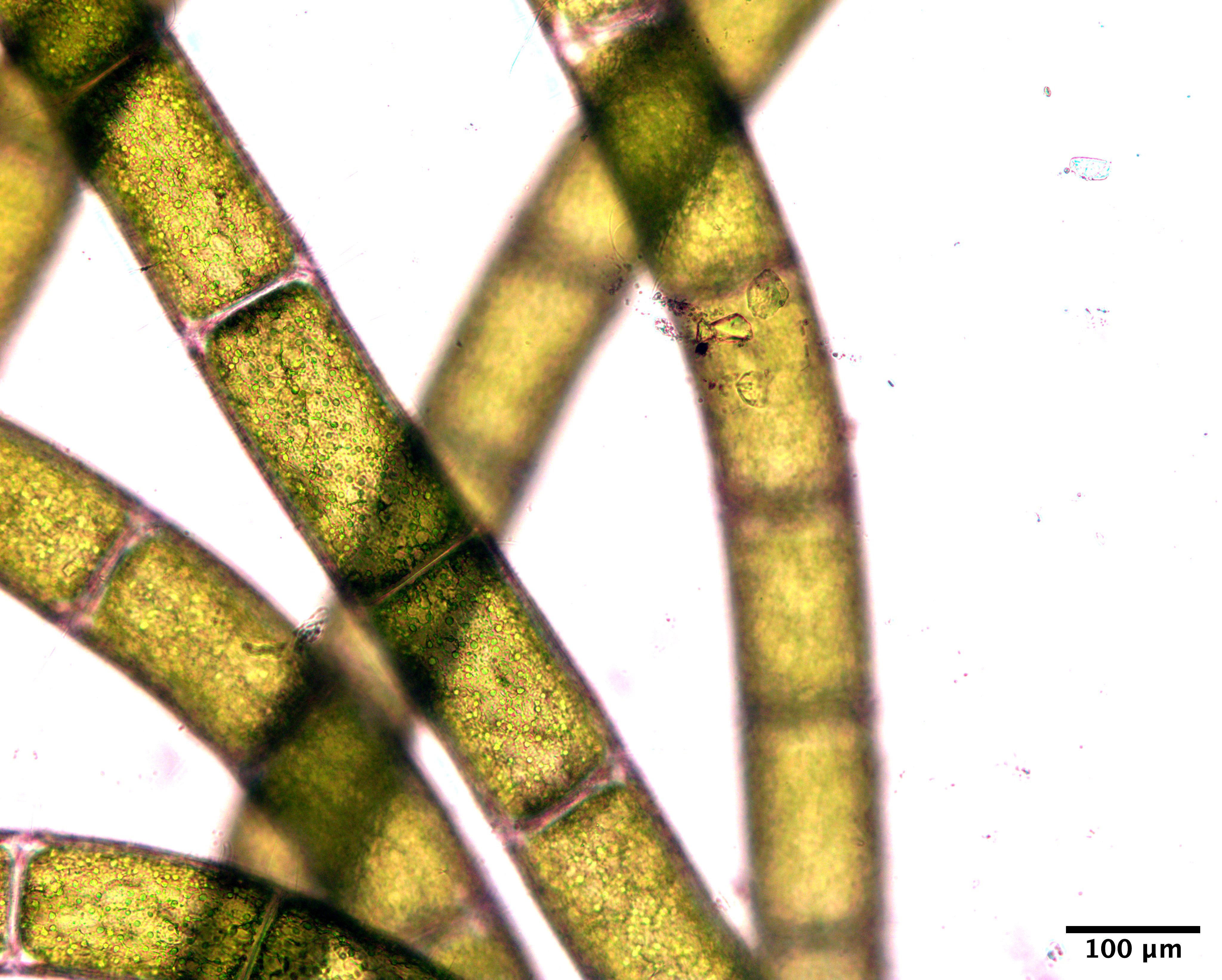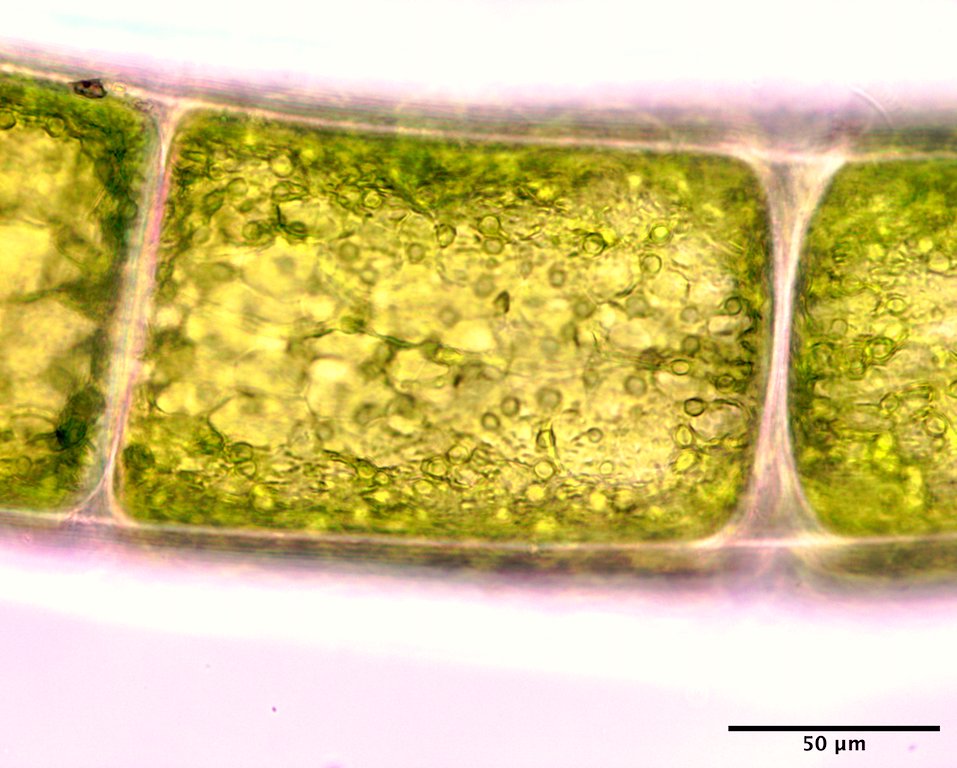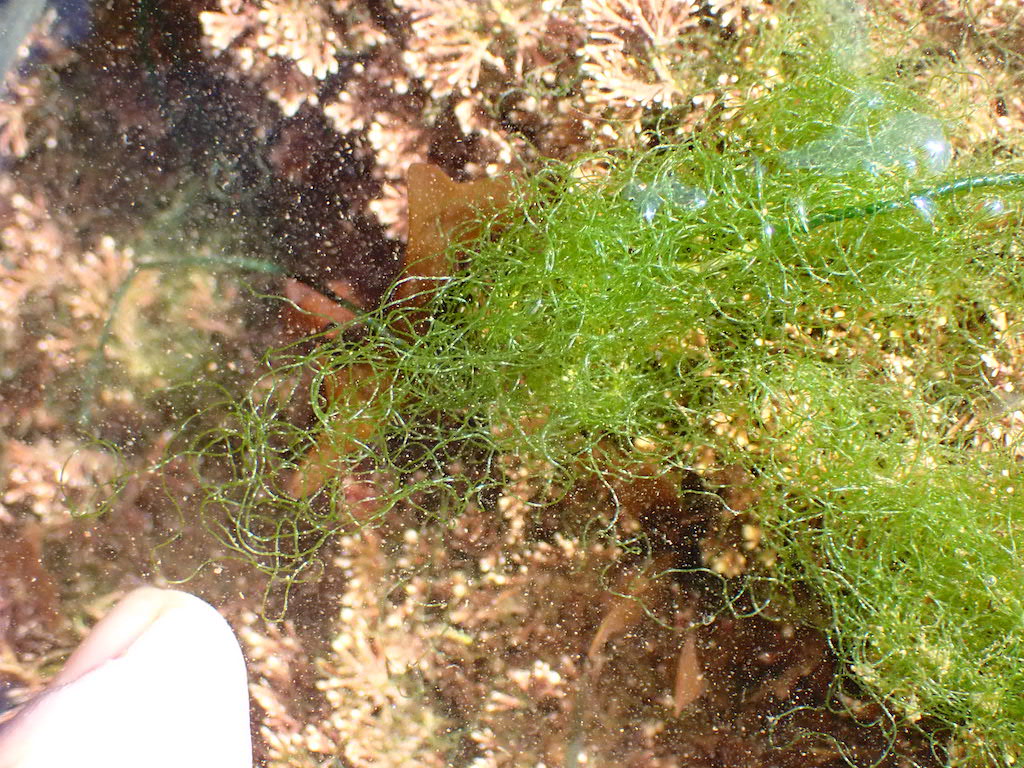This species is dark green and unattached being typically tangled in other algal species in low to mid intertidal pools (Featured image), as well as subtidal. The cells are 90-110 µm wide and 100-200 µm long; the cells square to slightly rectangular (length to width ~1-2:1) (Image A). Chloroplasts form a parietal reticulate network and multiple pyrenoids are evident (Image B).
Although recently excluded from the BC flora (Gabrielson & Lindstrom 2018), the genetic group to which we currently apply this name has collections from that region as well as the NW Atlantic. Further study is needed. Indeed the genus Chaetomorpha requires significant taxonomic work in the Canadian flora. Possibly confused with Chaetomorpha tortuosa (Dillwyn) Kleen, that species has thinner filaments. Species of Rhizoclonium (e.g. Rhizoclonium riparium (Roth) Harvey) have thinner filaments again, as well as thicker walls.
 Image A. Whole mount displaying the vegetative cells (mid intertidal pool tangled in other algae, Lepreau exposed biodiversity site, NB; GWS045844).
Image A. Whole mount displaying the vegetative cells (mid intertidal pool tangled in other algae, Lepreau exposed biodiversity site, NB; GWS045844).
 Image B. Whole mount displaying the parietal network of chloroplasts with pyrenoids (GWS045844).
Image B. Whole mount displaying the parietal network of chloroplasts with pyrenoids (GWS045844).
